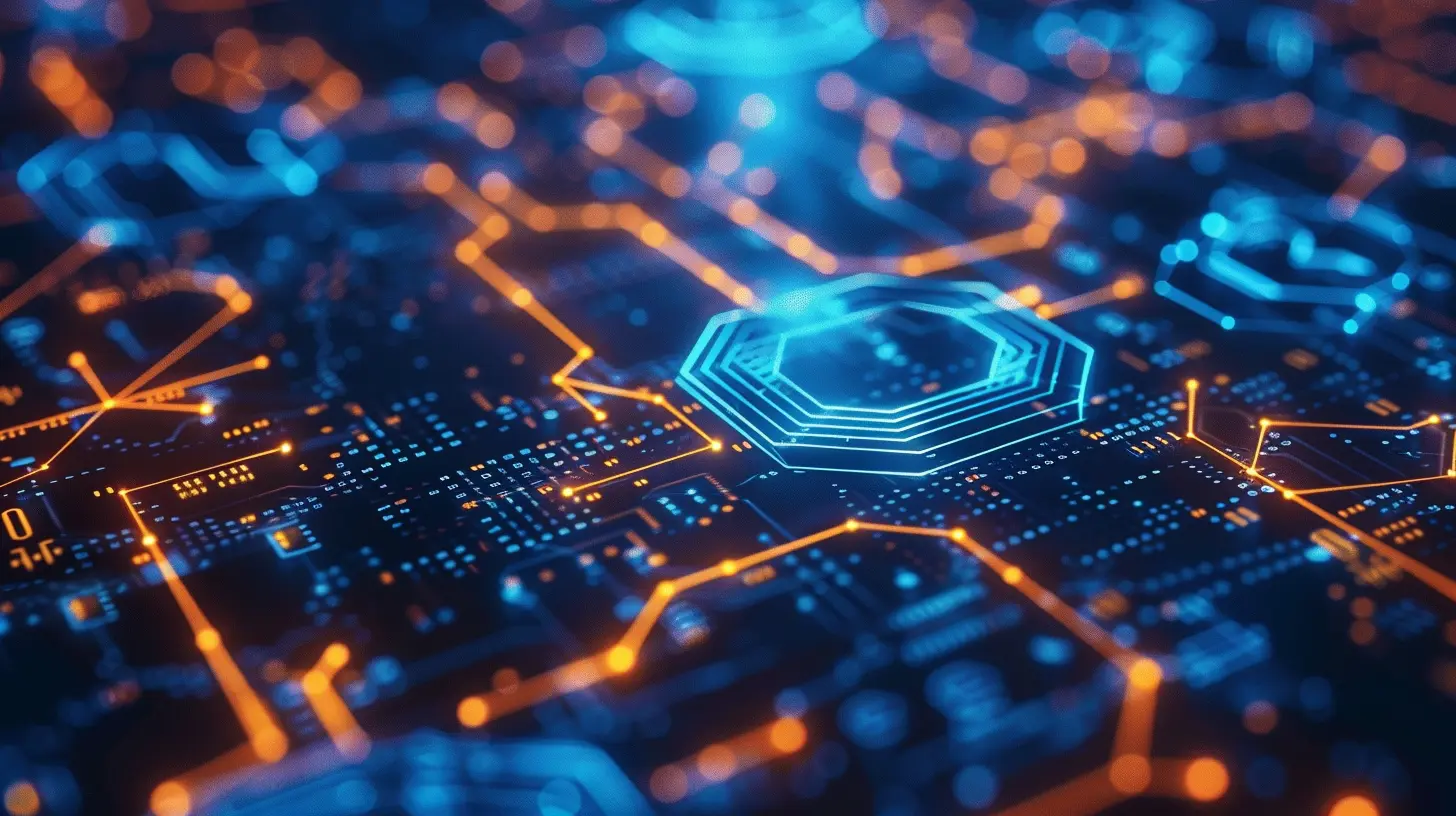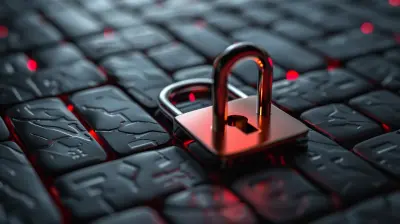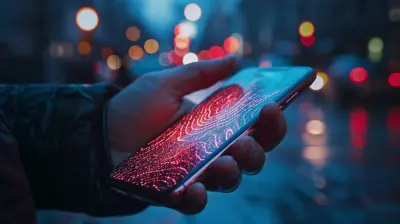The Intersection of Blockchain and Renewable Energy
25 July 2025
The world’s energy needs are growing faster than ever, but so are the calls for a sustainable future. We’re standing at a crossroads, where technology and climate change concerns are pushing us to rethink the status quo. Have you ever wondered if there’s a way to combine cutting-edge digital advances with the green energy revolution? Well, buckle up—because blockchain and renewable energy are teaming up in a way that could change the game entirely.
These two seemingly unrelated forces are crashing together like waves and wind on a stormy sea, and the result? Innovation like we've never seen before.

Why This Intersection Matters Right Now
Let’s face it, our traditional energy systems are outdated. Centralized power grids, fossil fuel dependency, and limited transparency have brought us to the brink of an energy crisis. Meanwhile, the climate is screaming for help, and we’re racing against time to go green. Renewable energy sources like solar, wind, and hydro are part of the solution, but there's a catch.The real problem isn’t just generating clean energy—it's managing, distributing, and tracking it effectively. That’s where blockchain walks in like a superhero.
Imagine a world where energy is democratized, peer-to-peer, and completely transparent. Sounds futuristic, right? Well, it's happening. And blockchain is the driving engine behind this shift.

What Is Blockchain Anyway?
Before we dive deep, let's clear the air a bit. Blockchain isn’t just for Bitcoin bros or crypto traders.At its core, blockchain is a decentralized digital ledger. Think of it like a super-secure, tamper-resistant notebook that records transactions. But instead of one person holding the notebook, it’s shared among thousands (or millions) of people. Every transaction is verified, timestamped, and locked into place—no funny business.
So, how does this tech that's usually associated with cryptocurrency connect with renewable energy? Short answer: trust, automation, and decentralization.

The Current Pitfalls in Renewable Energy Systems
Even the shiniest solar panels and the tallest wind turbines can’t fix the inefficiencies baked into our current energy infrastructure. Here are some of the big issues:- Centralized energy control – A few big players call all the shots.
- Lack of transparency – It’s hard to track where energy comes from or how it’s used.
- Difficulty integrating small energy producers – Ever tried selling extra solar energy from your rooftop? Yeah, not so simple.
- Energy waste – Unused energy often goes to waste because it can’t be redirected efficiently.
Now, imagine if these problems could be tackled with one powerful, digital tool. Enter blockchain.

Blockchain to the Rescue: How It Transforms Renewable Energy
Let’s dig into the juicy part—how blockchain is revolutionizing green energy.1. Peer-to-Peer Energy Trading
Have solar panels at home? Great! What if you could sell your surplus energy directly to your neighbor, no middleman required? Blockchain makes this possible.Using smart contracts (automated digital agreements stored on the blockchain), people can buy and sell electricity directly. This peer-to-peer model makes the energy market more democratic and efficient.
It’s like Airbnb, but for energy. You’ve got extra sunshine? You can “rent it out” as energy via a blockchain platform.
2. Transparent Energy Tracking
Want to make sure your energy is really green? Blockchain enables real-time, verifiable tracking of energy sources. You can trace every kilowatt-hour (kWh) back to its origin.This kind of transparency is a game-changer for eco-conscious consumers and companies aiming to reduce their carbon footprint.
3. Microgrids and Decentralization
Microgrids—localized energy grids that can operate independently or alongside the main grid—are popping up everywhere. Blockchain makes managing these networks seamless by automating distribution and settlements.Think of each home, farm, or factory as a mini power station. Blockchain acts as the traffic controller, ensuring energy flows to where it’s needed most, when it's needed most.
4. Speedy & Secure Payments
Manual billing? Delayed payments? That’s so last decade.With blockchain, payments for energy can happen in real-time. Whether it's a customer paying for usage or a producer getting compensated, smart contracts make sure the money moves automatically and securely.
No spreadsheets. No waiting. No hassles.
5. Tokenization of Energy Assets
Another cool concept: tokenizing energy. Imagine each unit of energy as a digital token stored on a blockchain. These tokens can be bought, sold, and traded just like stocks.This opens the door for small investors to get a slice of the renewable energy pie. You don't need to buy a whole wind turbine—just invest in a fraction.
Real-World Examples: Companies Blazing the Trail
This isn’t just fantasy talk. Several forward-thinking startups and organizations are already making this a reality.- Power Ledger (Australia) – Facilitates peer-to-peer energy trading and tracks renewable energy generation.
- WePower (Lithuania) – Uses blockchain to help producers raise capital by pre-selling their energy via smart contracts.
- Sun Exchange (South Africa) – Lets people around the globe invest in solar projects and earn income from the energy generated.
These pioneers are proving that blockchain and renewables are more than a trend—they’re a movement.
The Benefits: Why Should We Care?
So, what’s in it for us (besides saving the planet)? Here's the upside:- Lower energy costs – By removing middlemen and giving consumers more control.
- Increased energy access – Especially in developing areas where centralized systems don’t exist.
- Boosted innovation – Opens the door for new business models and job creation.
- Strengthened energy security – Decentralized systems are less vulnerable to large-scale outages.
It’s a win-win-win situation.
Challenges Still on the Grid
Alright, we can’t ignore that there are hurdles ahead. Every new tech faces a few speed bumps on the road to adoption.Regulatory Uncertainty
Let’s be honest—governments haven’t quite caught up yet. The legal and regulatory framework around blockchain in energy is still in flux. That can slow things down.Scalability Concerns
Handling thousands of energy transactions per second is no small feat. Blockchain needs to scale up while staying energy-efficient itself.That’s kind of ironic, right? We want to use blockchain to make energy cleaner, but some blockchain systems also use a lot of energy. Luckily, newer consensus models like Proof of Stake are much easier on the environment.
Public Awareness
Right now, most people still think blockchain equals Bitcoin. There’s a big knowledge gap to close before mass adoption can happen.
What’s Next for This Tech-Made Power Couple?
The future is electric—literally and digitally. As nations race to meet climate goals and push for net-zero emissions, the fusion of blockchain and renewable energy could be the rocket fuel they need.We’ll likely see:
- More cross-border energy markets
- Rise of energy-as-a-service (EaaS) models
- Greater consumer participation in energy markets
- AI and IoT integration for smarter grids using blockchain
The beauty of it all? This isn’t just a dream or a blueprint on some policy paper. The wheels are already in motion. And if you’re not paying attention yet, now’s the perfect time to tune in.
Simple Ways You Can Get Involved
You don’t need a PhD or a tech startup to be part of this revolution. Here’s how you can jump in:1. Switch to blockchain-enabled green energy providers (some are already out there!)
2. Install solar panels and look into peer-to-peer platforms
3. Support legislation that promotes clean, tech-covered energy
4. Read up, share, and spread the word—the more people understand the impact, the faster change happens.
Just like how we embraced smartphones and streaming services, embracing blockchain in energy could become second nature sooner than we think.
Final Thoughts: The Power of Tech for a Greener Tomorrow
At the end of the day, what we really want is simple: clean, affordable, and reliable energy. Blockchain doesn’t produce energy, but it revolutionizes how we interact with it.It’s like giving the power grid a brain—and a conscience.
With a little innovation, some collaboration, and a whole lot of determination, this intersection of blockchain and renewable energy could light the path to a future that's both high-tech and planet-friendly.
Let’s not wait for the system to evolve—let’s be the ones to change it.
all images in this post were generated using AI tools
Category:
Environmental TechAuthor:

Ugo Coleman
Discussion
rate this article
1 comments
Helen McQuillan
This article insightfully highlights the potential of blockchain to enhance transparency and efficiency in renewable energy markets, paving the way for innovative solutions and sustainable practices.
July 27, 2025 at 4:43 AM

Ugo Coleman
Thank you for your thoughtful comment! I'm glad you found the article insightful and that it resonates with the potential of blockchain in promoting sustainability.


